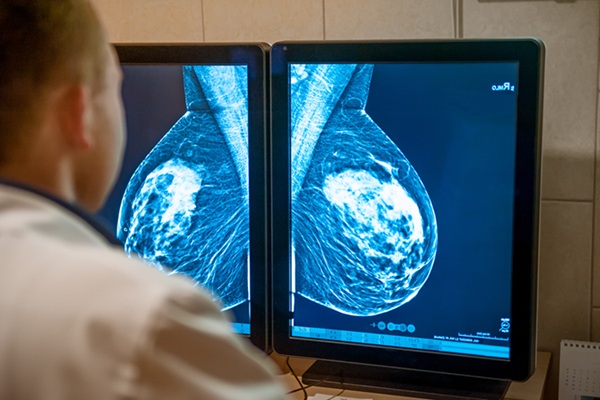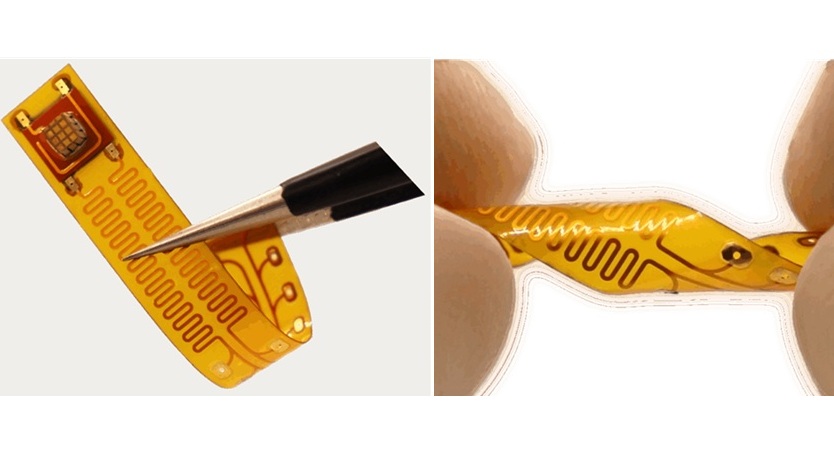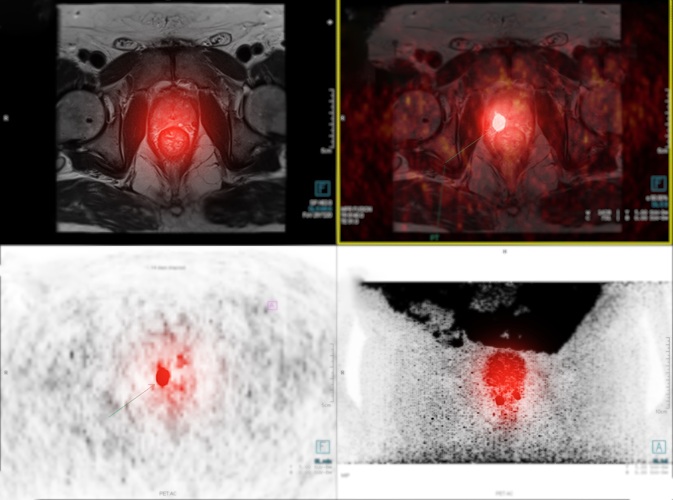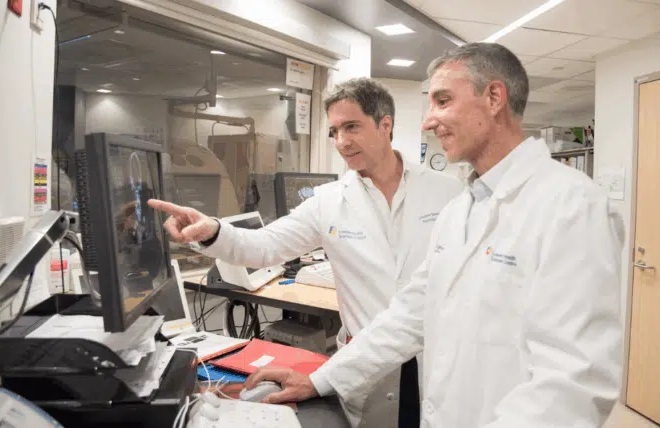Same-Day Procedure to Diagnose and Treat Lung Cancer Combines CT Scan and Robotic Video-Assisted Thoracic Surgery
|
By MedImaging International staff writers Posted on 22 Feb 2022 |
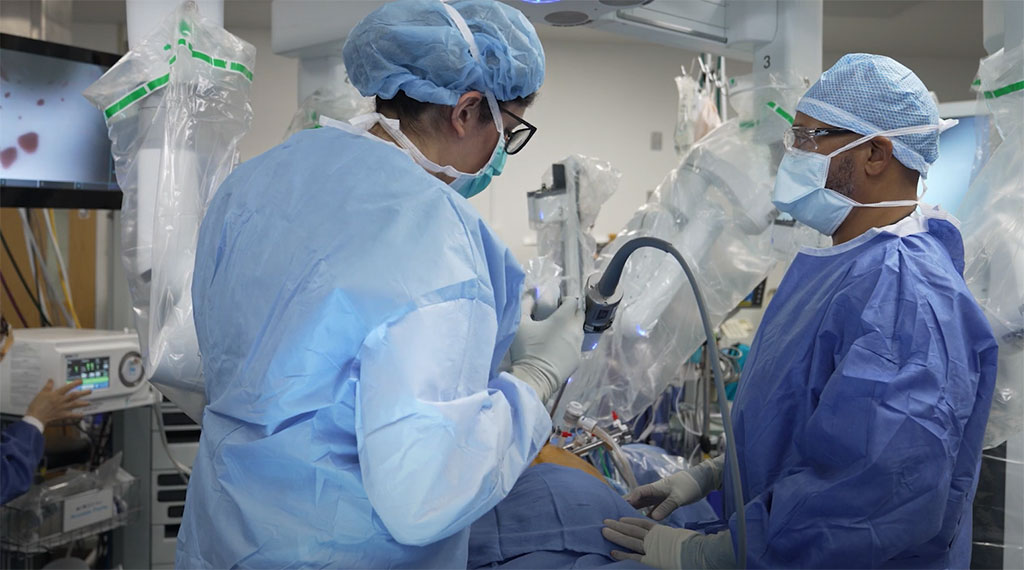
A new approach combines the use of a robot for minimally invasive bronchoscopy for early lung cancer detection with same-day surgery to remove lung tumor.
A team of pulmonary and thoracic experts at MedStar Georgetown University Hospital (Washington, DC, USA) has adoped this new approach for lung cancer diagnosis and surgical removal of the tumor on the same day, thereby increasing the opportunity for limited follow-up therapy – or even curing the cancer. Previously this process of diagnosis and treatment could take several weeks - a critical time when cancer can continue to grow, and patients can experience increased anxiety about their health and prognosis.
In this new approach – Combined Robotic Assisted Thoracic Surgery (CRATS) – high-risk lung cancer patients first undergo a low dose CT scan of the lung to monitor for tumors. If a tumor is detected, the Ion robot bronchoscope is used to biopsy the lung tumor. If the lung tumor is found – through real-time biopsy – to be cancer, then the endobronchial ultrasound is used to determine if the cancer has spread to lymph nodes. If the lymph nodes are normal, then the patient undergoes surgery to remove the portion of the lung with the cancerous tumor using the DaVinci robotic video-assisted thoracic surgery system during the same anesthesia procedure. This new process – diagnosing lung cancer and removing the tumor at the same time - saves valuable time by removing the cancer right when it is detected, thereby limiting the opportunity for spread of disease and allowing for the start of additional therapies sooner if needed. In some instances, this approach can be curative of the cancer.
The Ion robot is a “game-changing” tool that enables surgeons to reach peripheral nodules in the lung to diagnose lung cancer sooner, thereby increasing the opportunity for earlier diagnosis and treatment of lung cancer, the leading cause of cancer deaths worldwide for both men and women. Ion endoluminal is a minimally invasive robotic-assisted system that helps address a challenging aspect of lung biopsy by enabling physicians to obtain tissue samples from deep within the lung. While survival rates for lung cancer have improved over the past decade in part due to early screening, physicians know that improved outcomes are directly linked to early detection. Coupled with regular screening for those at high risk, the Ion system makes possible earlier and more accurate detection of cancer, especially for small nodules.
In addition to giving surgeons real-time guidance for improved accuracy, the Ion robot can navigate through small and tortuous airways to reach nodules in any airway segment within the lung with its flexible biopsy needle that can pass through very tight bends to collect tissue in the peripheral lung. The catheter’s 2 mm working channel can also accommodate other biopsy tools, such as biopsy forceps and cytology brushes, if necessary. The system’s fiber optic shape sensor technology, developed by Intuitive, is to provide the physician with the precise location and shape information of the catheter throughout the navigation and biopsy process.
“Coupling this early diagnosis with same-day surgery for lung cancer is a win for patients,” said Eric D. Anderson, MD, director of Interventional Pulmonology at MedStar Georgetown University Hospital. “We know that the earlier we find the nodule in the lung and the smaller it is, that has the greatest impact on mortality. If we find the nodule at 1 mm, there is 90% chance of survival. At 2 mm, there is 80%, and at 3 mm 70%. Combine those odds with the potential immediate removal of the tumor, and the Ion robot gives patients a real chance for better outcomes.”
Related Links:
MedStar Georgetown University Hospital
Latest General/Advanced Imaging News
- New Ultrasmall, Light-Sensitive Nanoparticles Could Serve as Contrast Agents
- AI Algorithm Accurately Predicts Pancreatic Cancer Metastasis Using Routine CT Images
- Cutting-Edge Angio-CT Solution Offers New Therapeutic Possibilities
- Extending CT Imaging Detects Hidden Blood Clots in Stroke Patients
- Groundbreaking AI Model Accurately Segments Liver Tumors from CT Scans
- New CT-Based Indicator Helps Predict Life-Threatening Postpartum Bleeding Cases
- CT Colonography Beats Stool DNA Testing for Colon Cancer Screening
- First-Of-Its-Kind Wearable Device Offers Revolutionary Alternative to CT Scans
- AI-Based CT Scan Analysis Predicts Early-Stage Kidney Damage Due to Cancer Treatments
- CT-Based Deep Learning-Driven Tool to Enhance Liver Cancer Diagnosis
- AI-Powered Imaging System Improves Lung Cancer Diagnosis
- AI Model Significantly Enhances Low-Dose CT Capabilities
- Ultra-Low Dose CT Aids Pneumonia Diagnosis in Immunocompromised Patients
- AI Reduces CT Lung Cancer Screening Workload by Almost 80%
- Cutting-Edge Technology Combines Light and Sound for Real-Time Stroke Monitoring
- AI System Detects Subtle Changes in Series of Medical Images Over Time
Channels
Radiography
view channel
AI Algorithm Uses Mammograms to Accurately Predict Cardiovascular Risk in Women
Cardiovascular disease remains the leading cause of death in women worldwide, responsible for about nine million deaths annually. Despite this burden, symptoms and risk factors are often under-recognized... Read more
AI Hybrid Strategy Improves Mammogram Interpretation
Breast cancer screening programs rely heavily on radiologists interpreting mammograms, a process that is time-intensive and subject to errors. While artificial intelligence (AI) models have shown strong... Read moreMRI
view channel
AI-Assisted Model Enhances MRI Heart Scans
A cardiac MRI can reveal critical information about the heart’s function and any abnormalities, but traditional scans take 30 to 90 minutes and often suffer from poor image quality due to patient movement.... Read more
AI Model Outperforms Doctors at Identifying Patients Most At-Risk of Cardiac Arrest
Hypertrophic cardiomyopathy is one of the most common inherited heart conditions and a leading cause of sudden cardiac death in young individuals and athletes. While many patients live normal lives, some... Read moreUltrasound
view channel
Non-Invasive Ultrasound-Based Tool Accurately Detects Infant Meningitis
Meningitis, an inflammation of the membranes surrounding the brain and spinal cord, can be fatal in infants if not diagnosed and treated early. Even when treated, it may leave lasting damage, such as cognitive... Read more
Breakthrough Deep Learning Model Enhances Handheld 3D Medical Imaging
Ultrasound imaging is a vital diagnostic technique used to visualize internal organs and tissues in real time and to guide procedures such as biopsies and injections. When paired with photoacoustic imaging... Read moreNuclear Medicine
view channel
PET Tracer Enables Same-Day Imaging of Triple-Negative Breast and Urothelial Cancers
Triple-negative breast cancer (TNBC) and urothelial bladder carcinoma (UBC) are aggressive cancers often diagnosed at advanced stages, leaving limited time for effective treatment decisions.... Read more
New Camera Sees Inside Human Body for Enhanced Scanning and Diagnosis
Nuclear medicine scans like single-photon emission computed tomography (SPECT) allow doctors to observe heart function, track blood flow, and detect hidden diseases. However, current detectors are either... Read more
Novel Bacteria-Specific PET Imaging Approach Detects Hard-To-Diagnose Lung Infections
Mycobacteroides abscessus is a rapidly growing mycobacteria that primarily affects immunocompromised patients and those with underlying lung diseases, such as cystic fibrosis or chronic obstructive pulmonary... Read moreGeneral/Advanced Imaging
view channel
New Ultrasmall, Light-Sensitive Nanoparticles Could Serve as Contrast Agents
Medical imaging technologies face ongoing challenges in capturing accurate, detailed views of internal processes, especially in conditions like cancer, where tracking disease development and treatment... Read more
AI Algorithm Accurately Predicts Pancreatic Cancer Metastasis Using Routine CT Images
In pancreatic cancer, detecting whether the disease has spread to other organs is critical for determining whether surgery is appropriate. If metastasis is present, surgery is not recommended, yet current... Read moreImaging IT
view channel
New Google Cloud Medical Imaging Suite Makes Imaging Healthcare Data More Accessible
Medical imaging is a critical tool used to diagnose patients, and there are billions of medical images scanned globally each year. Imaging data accounts for about 90% of all healthcare data1 and, until... Read more
Global AI in Medical Diagnostics Market to Be Driven by Demand for Image Recognition in Radiology
The global artificial intelligence (AI) in medical diagnostics market is expanding with early disease detection being one of its key applications and image recognition becoming a compelling consumer proposition... Read moreIndustry News
view channel
GE HealthCare and NVIDIA Collaboration to Reimagine Diagnostic Imaging
GE HealthCare (Chicago, IL, USA) has entered into a collaboration with NVIDIA (Santa Clara, CA, USA), expanding the existing relationship between the two companies to focus on pioneering innovation in... Read more
Patient-Specific 3D-Printed Phantoms Transform CT Imaging
New research has highlighted how anatomically precise, patient-specific 3D-printed phantoms are proving to be scalable, cost-effective, and efficient tools in the development of new CT scan algorithms... Read more
Siemens and Sectra Collaborate on Enhancing Radiology Workflows
Siemens Healthineers (Forchheim, Germany) and Sectra (Linköping, Sweden) have entered into a collaboration aimed at enhancing radiologists' diagnostic capabilities and, in turn, improving patient care... Read more












